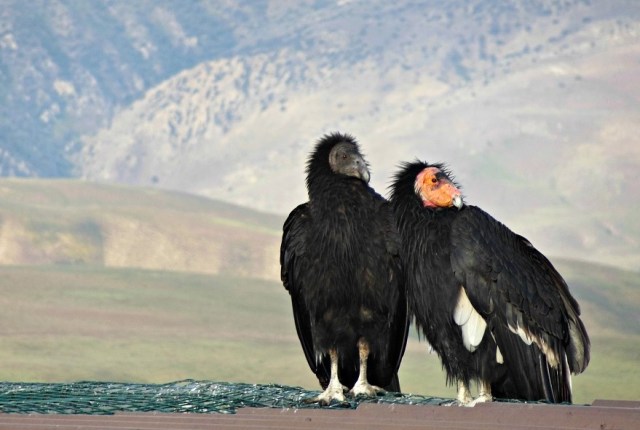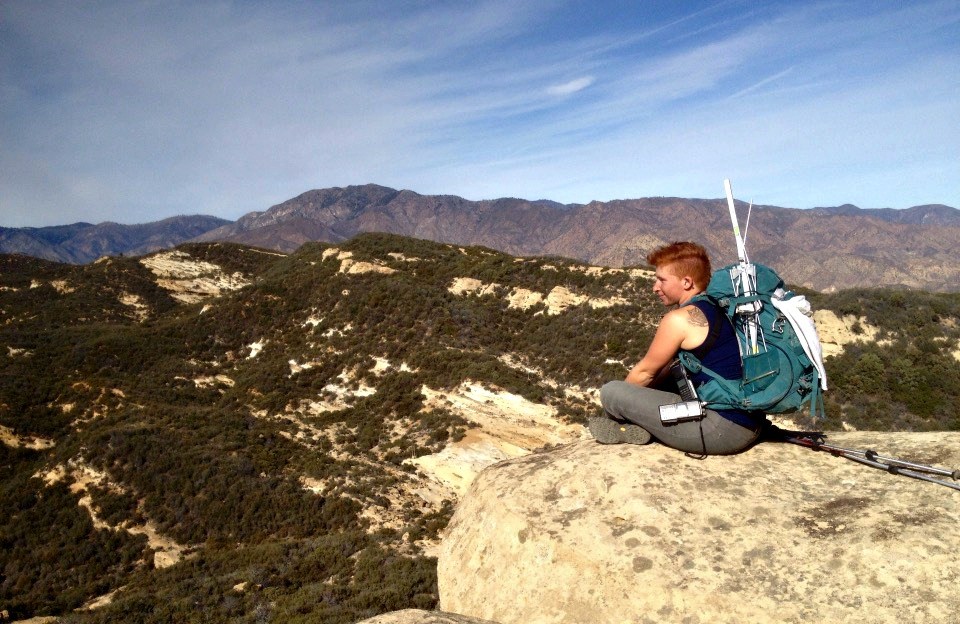BTN.com staff, January 2, 2016
Wanted: Recent college grad for a job that involves working with very large and somewhat scary-looking birds. Position entails having to more or less live outdoors. Some perks included, but pay comes out to less than minimum wage.
The job market may be tough right now, but it?s probably safe to say that most college graduates wouldn?t rush to send off their CV in response to a job listing like that. Then again, most college grads aren?t Alyssa Davidge.

This Penn State alumna landed the interesting gig described above right after her recent graduation. She works long hours to help preserve the endangered California condor, which involves tracking and monitoring these majestic birds over thousands of acres of mountainous terrain.
?I?ve had to leave my dog, my relationships and my home behind to do this job,? Davidge said. ?I won?t pretend that sometimes that doesn?t weigh heavily on me. Wildlife jobs just aren?t that easy to come by, and they are highly competitive.?
The Stroudsburg, Pa., native is on her second six-month contract with the Great Basin Institute, a non-profit funded by AmeriCorps. The organization promotes environmental research, education and conservation throughout the Western United States.
It isn?t an easy or comfortable life: Davidge puts in 12-hour days for $40 per day. (She?ll also receive a small stipend to put toward grad school at the completion of her contract.) And she works for 10 days straight in which she?s more or less alone in the wilderness.
Still, she?ll be the first to tell you that the job has benefits, and she?s not talking about a retirement account. For one thing, her ?office? is the beautiful Southern California country of Bitter Creek National Wildlife Refuge and the Hopper Mountain National Wildlife Refuge. And she?s seen things that few others ever will, such as watching a condor hatch from an egg.
?It was really cool to watch momma help her break out of her shell,? Davidge said, and added that established pairs only lay one egg every other year, so every nest and egg is very important. ?I?ve been lucky enough to get to watch her grow and eventually fledge [when the bird takes its first flight). She flies all over the refuge with her parents now.?
In addition to unforgettable experiences like that, the work seems to be a nice fit for her unique personality.
?I am so much more of an animal person than I am a people person,? she said. ?I was always a wild child, and definitely had an interest in nature from a very early age. My dad used to hike a lot for work and would bring me back cool turtle shells, skulls or pictures of things he saw, and we had a long stretch of woods behind our house I was always running around in.?
Davidge first heard about the plight of the condor, North America?s largest bird, in classes for her wildlife and fisheries major at Penn State. In the 1980s, the condor population dwindled to just 22 birds. At that point, biologists decided to capture them and begin a captive breeding program, a ?protective custody? of sorts.

?We were discussing environmental issues and managing wildlife and human conflict,? she said. ?Condors - along with bald eagles and golden eagles - suffer from lead poisoning, which is a direct result of people introducing lead into the environment.?
The problem stems from condors feeding on carrion that may carry traces of lead from ammunition, she added.
?Lead bullets are really toxic for the environment, yet hunters still use them,? Davidge explained. ?There are plenty of other bullets on the market that do a more efficient job and don?t fragment inside the target. With all of our diligent work, the condor could be de-listed [as an endangered species] if it weren?t for the presence of lead in their environment. However, that is a long-term chronic problem, and it won?t change unless people do.?
In 1992, they were reintroduced to their natural habitat, and there are currently about 250 wild condors in the world, 150 of which are in California. According to Davidge, the goal is eventually to have one flock that spans the entire West Coast.
[btn-post-package]It wasn?t just a keen understanding of environmental issues that landed Davidge the job of tracking condors. She also picked up radio telemetry experience while at Penn State - which, incidentally, is the same technology used to monitor the birds. Lightweight transmitters are attached to their tail feathers, which emit signals that allow technicians to figure out where the birds are most of the time.
Additionally, Davidge benefited from the guidance and support she received from Penn State faculty.
?I had some amazing professors who really inspired me and pushed me to really think about what choosing this path would mean for my future,? she said. ?I felt really empowered to be an awesome biologist when I left school, and I?m still determined to get there even though it seems the path is going to be a bit windier than I had anticipated.?
It?s been an uphill climb in both a figurative and literal sense. Davidge has used food stamps and odd jobs to help make ends meet while working as a condor-monitoring technician. Also, she used to live out of her car but recently sold it.
?I am now carless and homeless,? she said. ?I am planning to buy a conversion van soon, which is going to be like living in a mansion compared to sleeping in my old Forester.?
Also, while she?s thrilled that her job involves so much hiking, that can be extremely strenuous at times, even for a nature lover like Davidge.
?When we set up nest cameras for our wild nests, we sometimes have to hike in heavy equipment such as car batteries, solar panels and post pounders,? she explained. ?There are also times when we need to find remote nests, and hiking all your food and water for three days - eight miles up a mountain or across canyons that ascend over 2,000 feet in elevation in less than three miles - can be extremely physically demanding.
?But that?s what I love about my job. I would choose that over sitting in a cubicle in front of a computer any day! I also just love the unpredictability of what I do. Every day something different will happen. Every day I learn something new.?

By Meg Sullivan







